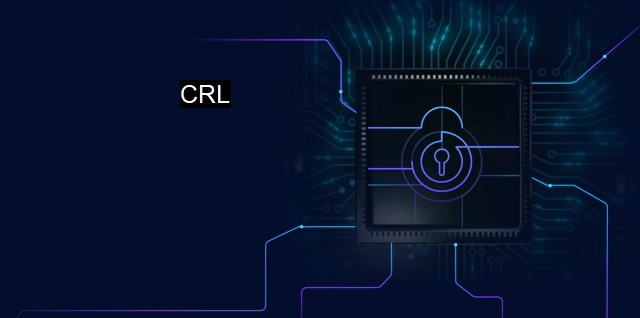What is CRL?
CRL – An Essential Part of Cybersecurity: Understanding its Applications and Usage
In the realm of cybersecurity and antivirus technology, "CRL" stands for 'Certificate Revocation List'. It is a crucial tool widely used to protect cyber infrastructure. A digital ecosystem thrives on trust, and mechanisms such as CRL help maintain that trust.A CRL is a record of digital certificates that have been revoked before the end of their validity period by a Certificate Authority (CA). A CA is an entity authorized to issue and manage these digital certificates in a network or across multiple systems. The primary motive of developing a certificate revocation list is to enhance the security management procedures within an network and increase overall cybersecurity.
In any electronic communication or a digital transaction, parties involved verify their identities by using digital certificates. Making an analogy to physical certificates, it is like an ID card conveying some important details such as holder's name, serial number, expiration date, copy of the holder's public key which can be used for encrypting messages and digitally signing information. All these details are recognized and authenticated by the certificate authority that has issued them.
More commonly, CRLs come into play with protocols such as HTTPS, SSL, and TLS where a secure connection or communication is required. These certificates can be understood as the backbone of secure internet and help in preventing malicious activity such as identity theft, intrusions, fake websites, and data breaches.
In certain scenarios, these certificates can become invalid or compromised, requiring revocation. Situations may involve the private key becoming known to an unauthorized party, the CA's certificate being compromised (triggering disruption in its ability to issue trustworthy certificates) or the certificate holder not abiding by the policies of usage set by the CA. In such scenarios, the CA moves such certificates to a CRL thus rendering them untrusted.
The process of checking a CRL during communication is important to prevent unwarranted activities and minimize potential damages caused by a certificate that should no longer be trusted. When the server communicates with the client in a transaction, the client verifies the certificate with the CRL. If the presented certificate is on the revocation list, the transaction is halted. The revoked certificates in the CRL are resumed to stay there until their pre-expected expiration date. Once their original expiry date passes, they can be removed from the CRL.
One of the limitations of the CRL approach is its dependence on a regular update cycle. The CRLs need to be frequently updated and distributed to ensure that all participants have the latest and valid information on revoked certificates. If a certificate gets revoked and the updated CRL is not propagated swiftly, some users could potentially make transactions thinking the certificate is valid when it is not, leading to a compromised situation.
To overcome this issue, a new protocol, known as Online Certificate Status Protocol (OCSP) has been developed. It allows real-time checks with the CA about a certificate's status, overcoming the problem of delayed CRL updates.
Therefore, "CRL", in the sphere of cybersecurity, is an essential tool to maintain trust in electronically communicated identities. It's a dynamic record that serves to notify all entities in the network of any certificates that may have become compromised and thus, could harm the communications or transactions being carried out by the users in the network. Few limitations do exist, but innovations such as the OCSP are addressing them. Radical developments in technology make CRL a necessary component preserving the integrity and security of digital communication in the cybersecurity and antivirus environment.

CRL FAQs
What is CRL in cybersecurity?
CRL stands for Certificate Revocation List. It is a list of digital certificates that have been revoked by the certification authority (CA) before their scheduled expiration date. CRL is used in cybersecurity to prevent the use of compromised or fraudulent certificates.Why is CRL important in cybersecurity?
CRL is important in cybersecurity because it helps prevent the use of compromised or fraudulent digital certificates. Once a certificate is revoked, it cannot be used to establish secure communications, which helps maintain the security and integrity of the digital environment.How does CRL work in antivirus software?
CRL works in antivirus software by checking if a digital certificate used by an application or file has been revoked. If the certificate is on the CRL, the antivirus software will either block or quarantine the file, depending on the security policy in place. This helps prevent the use of malicious applications or files that have been signed with fraudulent or compromised certificates.What is the difference between CRL and OCSP in cybersecurity?
CRL and OCSP are both methods of checking the revocation status of digital certificates, but they work differently. CRL is a periodically published list of revoked certificates, while OCSP is an online protocol that queries the CA's database for the status of a particular certificate. OCSP is faster and more efficient than CRL, but it requires a connection to the CA's server. CRL, on the other hand, can be cached for offline use, but it may not be as up-to-date as OCSP.Related Topics
Certificate Revocation List (CRL) Certificate Authority (CA) Digital Certificates Public Key Infrastructure (PKI) Certificate Pinning
| | A | | | B | | | C | | | D | | | E | | | F | | | G | | | H | | | I | | | J | | | K | | | L | | | M | |
| | N | | | O | | | P | | | Q | | | R | | | S | | | T | | | U | | | V | | | W | | | X | | | Y | | | Z | |
| | 1 | | | 2 | | | 3 | | | 4 | | | 7 | | | 8 | | |||||||